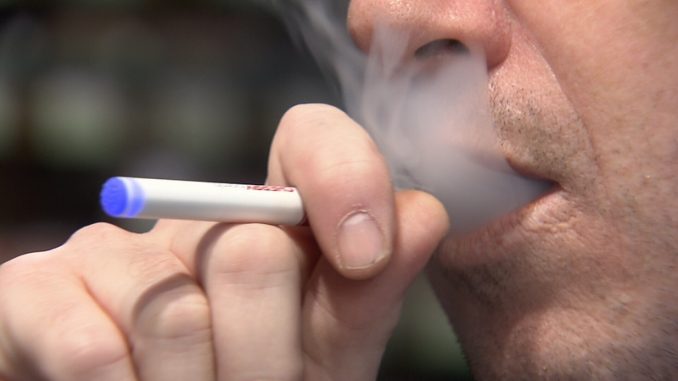
E-cigarettes were once marketed as “less harmful” options than regular cigarettes.
Over time however it’s become clear that they pose numerous health risks of their own –– and as a result, they are about to be widely restricted. Our previous article “FDA Expected To Ban Most E-Cigarettes” pointed out that as of late 2019, 55 deaths and 2,561 lung injuries had been linked to e-cigarettes; they are also believed to have significant potential to attract new, young users (as opposed to existing smokers trying a new product). Because of these factors, vape culture is on its way to being minimized.
This is a good thing for public health on the surface, but it is also likely to create a void. While some will undoubtedly continue to use e-cigs, others may find themselves looking for a fresh alternative (neither cigarette nor e-cigarette). So, what could replace e-cigs? Below, we’ll cover some possibilities.
1. Nicotine Replacement Therapy (NRT) products
One of the things that makes stopping smoking so difficult is that when people stop, they continue to crave nicotine. Nicotine Replacement Therapy is a way for nicotine users to get a dose of nicotine without having to smoke tobacco. NRT products commonly come in the form of gum, patches, and lozenges –– all of which have been approved by the FDA.
Nicotine gum offers an easy way for a user to get a nicotine dose through the mucosal lining of the mouth. The user simply chews the gum intermittently, rests the gum between the jaw and cheek when not chewing, and enjoys a periodic release of nicotine. Gum is commonly sold under brand names like Nicorette, Rogue Nicotine Gum, and Lucy Nicotine Gum.
Nicotine patches conveniently come in different strength levels and are placed on the user’s upper arm, upper chest, back, or shoulder to deliver nicotine through the skin. A new patch should be placed on the skin every morning, and can be worn for 16 hours or 24 hours, depending on the type and strength.
Nicotine lozenges are like little hard candies and, like gum, deliver nicotine through the mucosal lining of the mouth. They typically come in two strengths: 2mg and 4mg. The user determines which strength to use based on how much they would typically smoke or how strong nicotine cravings are. For example, if the user tended to smoke within 30 minutes of getting up, they would use the 4mg; if the first cigarette was later in the day (or there were fewer of them in general), the 2mg would likely suffice.
These products allow the user to have a reduced dose of nicotine while dropping the smoking habit so as to avoid the withdrawal symptoms that can come from quitting all at once.
2. Nicotine pouches
Though not yet FDA-approved, pouches can be used in similar ways to NRTs. These pouches are placed in the mouth (under the upper lip) and deliver nicotine to the user gradually, with no need to chew, suck, or smoke. They are conveniently small and can be carried around in a pocket, as well as easily disposed of in any trashcan once used.
Nicotine pouches are beginning to gain popularity as NRT-like alternatives in part because of the variety of products. The bestselling pouches at Prilla shows the extent of this variety, showcasing different brands, flavors and strengths that have already surfaced in the young market. Popular brands like Bridge, ZYN, and On! offer pouches in different pack sizes – with flavors including wintergreen, coffee, citrus, cinnamon, mango, and more. The user can also choose strength levels (with 2, 4, and 8mg options available).
3. Hemp cigarettes
Hemp cigarettes look similar to regular cigarettes, but do not contain any tobacco leaves. Instead, they usually contain small doses of CBD, which does not directly solve nicotine cravings, but can give the user a relaxing feeling (though not enough to cause a “high” like one gets from marijuana). Per GlobeNewswire piece on hemp cigarettes from SinglePoint and their emergence in the market, research suggests that smoking hemp cigarettes could be a potential tool to replace tobacco and nicotine addictions.
While this is potentially promising, there is a drawback with hemp cigarettes is, which is that inhaling smoke –– even from CBD –– exposes the user to potential lung damage.
In short time, we may well look at e-cigarettes as products of the past. And if and when that becomes the case, alternatives like those discussed above are likely to serve as common replacements for those quitting.

Be the first to comment